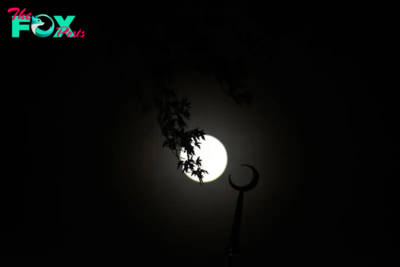Science
Sun fires off double-barreled X-class flares in span of 2 hours
The sun showcased its immense power yet again this morning (August 5), firing off not one but two X-class flares.
X flares are the strongest solar flare class. Today's first X blast, which launched from a sunspot called AR3767, reached its peak around 9:40 a.m. EDT (1340 GMT), clocking in at X1.7 on solar scientists' flare scale. Then, less than two hours later, the sunspot AR3780 fired off an X1.1 class solar flare, which peaked at 11:27 a.m. EDT (1527 GMT).
Solar flares are often accompanied by huge eruptions of solar plasma called coronal mass ejections (CMEs), which can cause geomagnetic storms if they hit Earth. These storms can have negative consequences, such as the disruption of power grids, but they can also supercharge the auroras, making these light shows more intense and extending them to lower latitudes than usual.
RELATED: Rare, mystery blasts from sun can devastate the ozone layer and spike radiation levels on Earth
That's exactly what happened this past weekend, as a G3 (strong) geomagnetic storm brought the northern lights into view across parts of the U.S. West Coast.
Based on the location of AR3767, however, direct impacts from a CME (if one did indeed launch along with today's first X flare) are unlikely, the U.S. National Oceanic and Atmospheric Administration's Space Weather Prediction Center (SWPC) shared on X today. Today's second flare is currently being investigated for any impacts as of this afternoon.
Wow! This #sllarstorm just got better and better for the west coast and for the southern hemisphere last night! https://t.co/7SNB0USCh7August 4, 2024
—Scientists discover the possible origin of the sun's magnetic field, and it's not where they thought it was
—Rare 'polar rain' aurora seen from Earth for the first time
—NASA spots unexpected X-shaped structures in Earth's upper atmosphere — and scientists are struggling to explain them
Through the middle of the week (Aug. 7), SWPC scientists forecast that the flare activity will persist from three active sunspots — AR3772, AR374 and AR3780 — as they parade across the sun from left to right, remaining visible in our view of the solar disk.
-

 Science8h ago
Science8h agoHow to See the ‘Beaver’ Supermoon—the last of 2024
-

 Science5d ago
Science5d agoInside Capitol Hill’s Latest UFO Hearings
-

 Science5d ago
Science5d agoYou Won’t Want to Miss the Leonid Meteor Shower. Here’s How and When You Can See It
-

 Science6d ago
Science6d agoHere’s What Trump’s Win Means for NASA
-

 Science1w ago
Science1w agoWhy Risky Wildfire Zones Have Been Increasing Around the World
-

 Science1w ago
Science1w agoIt’s Time to Redefine What a Megafire Is in the Climate Change Era
-

 Science1w ago
Science1w ago4 Astronauts Return to Earth After Being Delayed by Boeing’s Capsule Trouble and Hurricane Milton
-

 Science1w ago
Science1w agoThe Elegance and Awkwardness of NASA’s New Moon Suit, Designed by Axiom and Prada



























